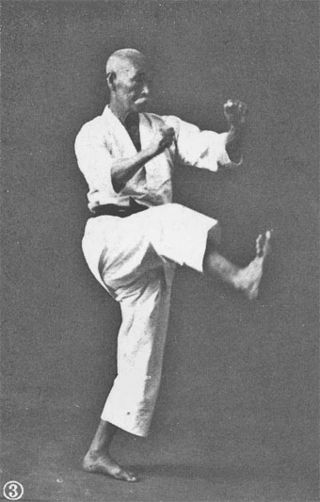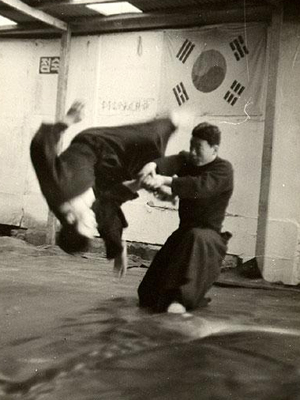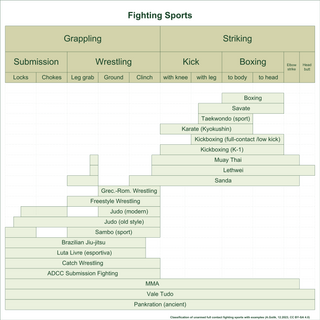Western interest
The Western interest in East Asian Martial arts dates back to the late 19th century, due to the increase in trade between the West and China and Japan. Reports on various Chinese and Japanese martial arts appeared in both academic journals and in the popular press during the later 19th century. However, relatively few Westerners actually practiced the arts, considering it to be mere performance.
Edward William Barton-Wright, a British railway engineer who had studied Jujutsu while working in Japan between 1894 and 1897, was the first man known to have taught Asian martial arts in Europe. In 1899 he also founded an eclectic martial arts style named Bartitsu which combined jujutsu, judo, boxing, savate and stick fighting. Within ten years, jujutsu classes were being taught in many Western countries including England, France, Germany, Italy, the USA, Australia and New Zealand. Subsequently, an awareness of jujutsu, in particular, entered Western popular culture and the art was featured in innumerable newspaper and magazine articles, novels and instructional manuals throughout the early-mid 20th century.
Its use during pre-war and World War Two showed the practicality of martial arts in the modern world and were used by Japanese, US, Nepalese (Gurkha) commandos as well as Resistance groups, such as in the Philippines, (see Raid at Los Baños) but not so excessively or at all for common soldiers.

However, aside from jujutsu, Asian martial arts remained largely unknown in the West even as late as the 1950s; for example, in the 1959 popular fiction Goldfinger, Karate was described to readers in near-mythical terms and it was credible for British unarmed combat experts to be represented as completely unaware of martial arts of this kind. The novel describes the protagonist James Bond, an expert in unarmed combat, as utterly ignorant of Karate and its demonstrations, and describes the Korean 'Oddjob' in these terms:
"Goldfinger said, 'Have you ever heard of Karate? No? Well that man is one of the three in the world who have achieved the Black Belt in Karate. Karate is a branch of judo, but it is to judo what a Spandau is to a catapult...'." [6]
Such a description in a popular novel assumed and relied upon karate being almost unknown in the West. It linked karate with judo, whereas in reality karate is a distinct art almost unrelated to judo.
As Western influence grew in East Asia a greater number of military personnel spent time in China, Japan, and Korea. Exposure to martial arts during the Korean War was also significant. Gradually some soldiers saw the value of Eastern martial arts and began training in them.
With large numbers of American servicemen stationed in Japan after World War II, the adoption of techniques and the gradual transmission of entire systems of martial arts to the West started, eventually resulting in American Karate and other adaptations. It was in the 1950s, however, when this exportation of systems really began to gain momentum. Large groups of U.S. military personnel were taught Korean arts (Taekwondo) during the Korean War. American interest in martial arts began to broaden in the late 1960s after Bruce Lee played the role of Kato in The Green Hornet. This show introduced Asian martial fighting styles to the American television audience. [7] In the early 1970s, martial arts movies furthered the popularity of martial arts.
This exportation of the martial arts led to such styles as sport karate, which became a major international sport, with professional fighters, big prizes, television coverage, and sponsorship deals.
The later 1970s and 1980s witnessed an increased media interest in the martial arts, thanks in part to Asian and Hollywood martial arts movies and very popular television shows like "Kung Fu" that incorporated martial arts moments or themes. Jackie Chan and Jet Li are prominent movie figures who have been responsible for promoting Chinese martial arts in recent years. [8]












